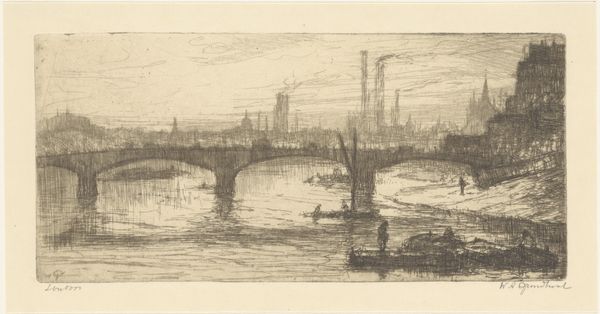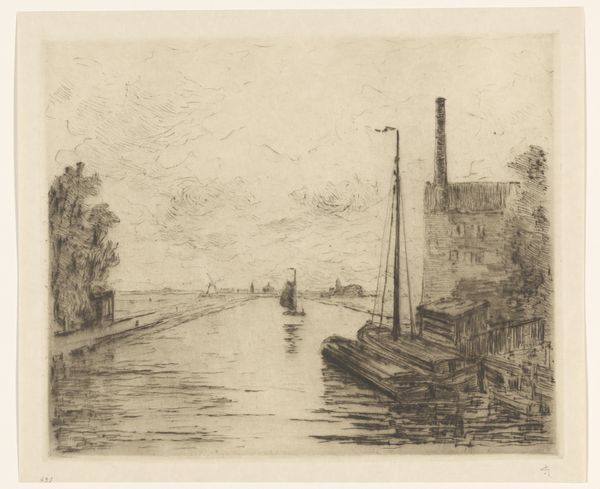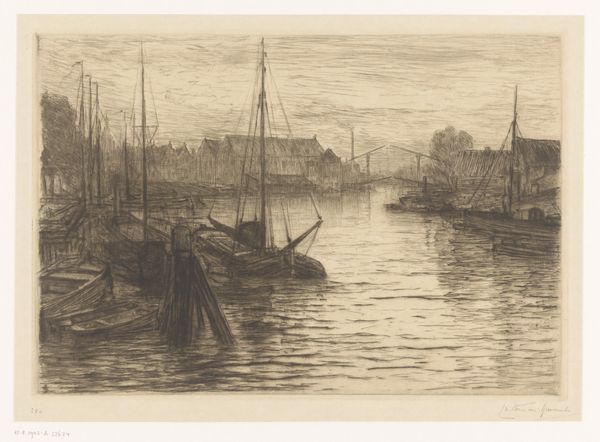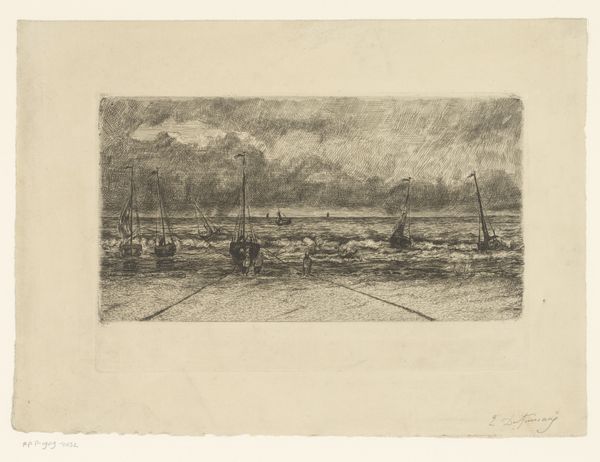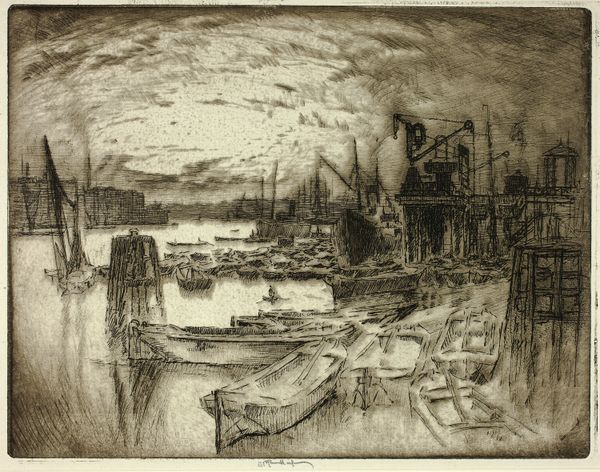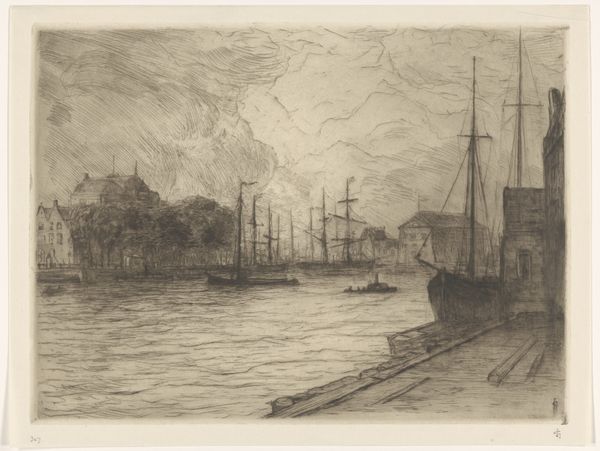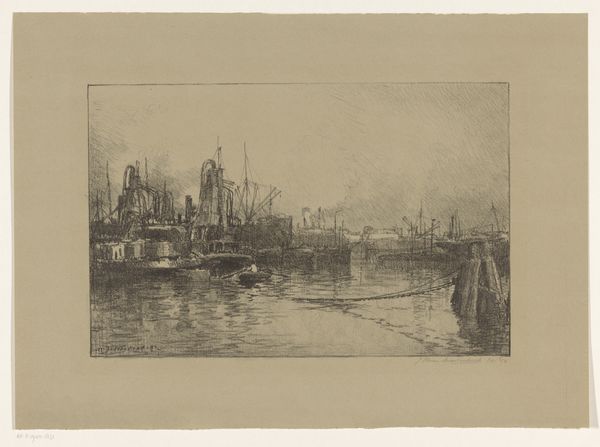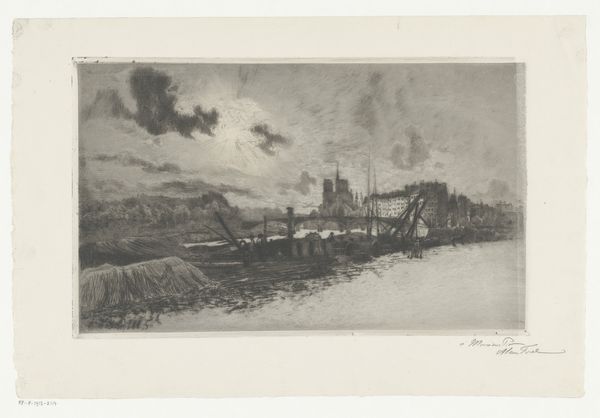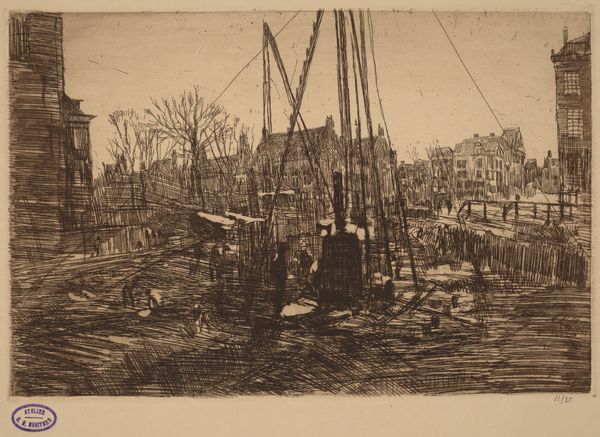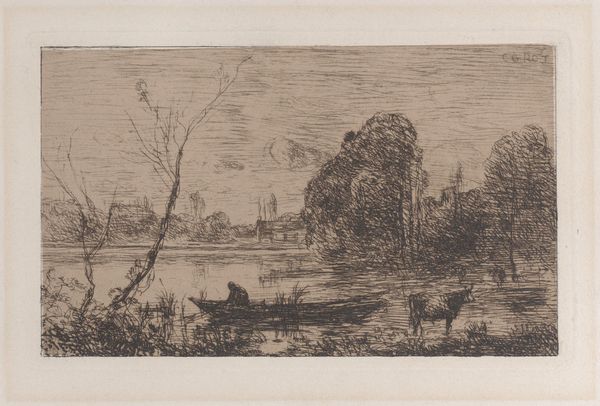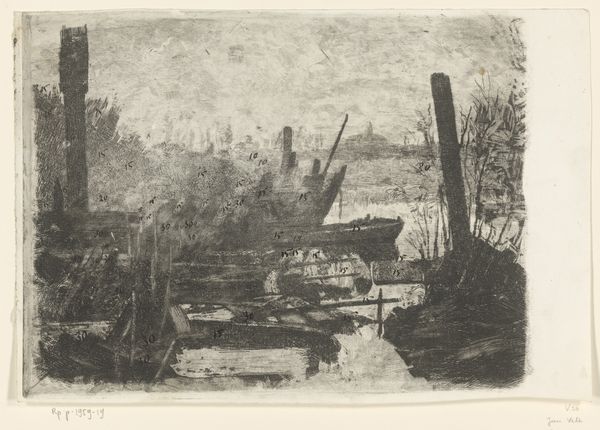
Copyright: National Gallery of Art: CC0 1.0
Curator: Joseph Pennell created this etching, "Tower Bridge, Evening," around 1905. It offers a compelling glimpse into London's docklands at the turn of the century. Editor: It’s melancholic, isn’t it? The soft etching creates a hazy, dreamlike atmosphere, a romantic vision of industry. The looming sky almost seems to weigh on the ships below. Curator: Absolutely. Pennell was deeply influenced by Whistler and the Aesthetic movement, focusing on the beauty and atmosphere of urban landscapes. He consciously engages with the romanticizing of modern industrial life. Editor: The bridge itself acts as an almost mythical gateway here. The steamboats seem to pass through it, vessels of industry entering into the city and, perhaps symbolically, carrying forward progress. There's a grand, almost allegorical feeling to it. Curator: Yes, the Tower Bridge was relatively new then, completed in 1894. It was hailed as an engineering marvel, embodying Victorian ingenuity and Imperial ambition. Pennell shows us how such structures are embedded in the collective psyche of the era. His prints contributed to its symbolic value. Editor: The smoke billowing from the ships becomes part of that almost ominous sky. I see a visual metaphor here: the literal smoke and shadow suggesting the darker side of industrialization, and also a more existential pondering of where the promise of "progress" will actually lead. Curator: Well, Pennell himself had strong views on this sort of progress! His focus in art was aesthetic pleasure and that cities presented that to him – unlike others, he celebrated the changes, seeing the beauty, not the darkness. Prints were his way to democratize and circulate his vision to the masses. Editor: So, he’s consciously shaping public perception of modernization. But I see something haunting in those delicate lines. The symbolic weight of these immense structures can be unsettling. I leave seeing a tension, one where industrial hubris sits next to human anxieties. Curator: A perfect summary: he made accessible through his printmaking something very powerful. Editor: Precisely, images such as these, etched into our cultural consciousness, shape not only our past but also our future perceptions of the narratives that are linked to cityspaces and to industry.
Comments
No comments
Be the first to comment and join the conversation on the ultimate creative platform.
